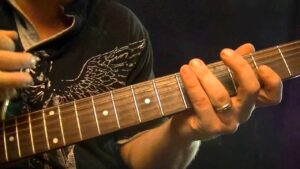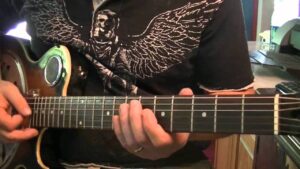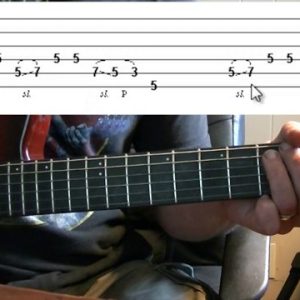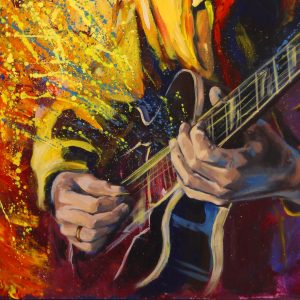Perfect For All Levels Of Guitar Ability
Discover The Improvisational Tricks Of Blues Masters Like B.B. King, Stevie Ray Vaughan, Eric Clapton, And Albert King
The Guaranteed Way To Tear Up The Fretboard Every Time You Pick Up A Guitar

Whether you are just learning how to play the guitar, or you already have some basic skills, this course can help you to improve your blues improvisational skills -dramatically.
Even if you already play at the intermediate or advanced level and you just want to refine your technique, this is a program for you. Our ground-breaking program covers all levels of experience and expertise!
With my exclusive Blues Improvisation course, you will have access to training and tutoring in all the important areas of blues improvisation.
Anyone can learn to play the blues. Why not you, too? I’ll take you step-by-step.

Imagine yourself at the local blues jam, your guitar in hand, surrounded by people enjoying your music, and even asking you to play more for them. People always appreciate good music, and you may just find yourself the center of attention.
Or imagine yourself and your buddies putting a band together. Due to your great new sound, bars, and clubs are calling to book you. People start to recognize you as you walk down the street. As you build a name for yourself, who knows? People may even start coming to you for advice or lessons! You may even end up on the radio!
With “Blues Improvisation” you’ll discover all the tricks of the trade, like:
- How to play “outside” the box
- The beginner and intermediate box patterns
- The “Albert King” box
- How to connect the boxes
- The power of the pentatonic
- How to play 12-bar blues
- How to improvise to a jam track
- The secret to a great vibrato
- Sliding techniques that will spice up your playing
- How to wail with bends
- Thrilling trill techniques
- Creative picking techniques
- How to play in any key signature
- Experiments with octaves
- Keys to playing above the 12th fret
- Tactics for transitioning between octaves
- Blue scale variations
- How to play (well) with others

You can’t lose with our 100%, ironclad, money-back guarantee
I’m so confident that you’ll be nothing less than impressed with the program, I’m going to give you 60 days of access and I’m going to take away all of the risks.
Test drive it for 60 days. If for any reason you’re not thrilled at the end of your trial period, just let me know and I’ll cheerfully send you a 100% refund of your investment. No questions. No hassles.
“Blues Improvisation”Online Course 37.00 
Sincerely,
![]()
P.S. Author David Alzofon, of American Songwriter magazine, sent me this e-mail to me about my Blues Improvisation course:
“Hi Kenny,As you may or may not know, I’m a guitar teacher in San Diego and a columnist with American Songwriter magazine (“Measure for Measure”). I have written two instruction books (see Amazon) and used to review instruction books for Guitar Player magazine a long time ago. I am still reviewing instruction courses every now and then online, too (see easyjazzguitar.com for my review of the 84 EQ system by Steve Crowell).What I like best about what you are doing is that you are beginning with a very narrow range of notes — G-A-C-D — and, after giving a few examples, turning students loose with complete creative freedom within that small range of notes. This is the way to do it! It is how Jef Raskin (the guy who created the Macintosh) taught me composition, and it’s the ONLY method that ever worked for me, even after years of college and private instruction. In my book (Compose Yourself) I called the principle behind Jeff’s teaching approach “Limited material, unlimited freedom.” I was pleasantly surprised to see that independently you’re doing something very similar, and I give it two enthusiastic thumbs up. People who use this method will learn.Also, the tones that you’re using cluster around the tonic, above and below, so they reinforce tonality, and they make a perfect rectangle on the fretboard. This is a strong visual signal that people will remember as the core when they start adding other scale tones. The four-point, G-A-C-D rectangle has the advantage of being the same in three different octaves, so it is a stable “sonic shape,” as Howard Roberts used to say, and not affected by the space warp across strings 3 and 2. This visual stability and transposability is a big point in its favor.Best,David Alzofon”
You can check out David’s articles at americansongwriter.com. His book “Compose Yourself” is sold on amazon.com.



